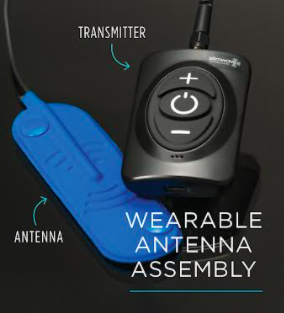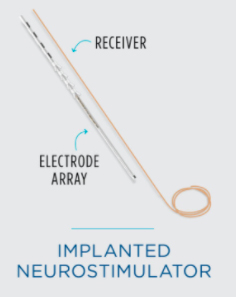
What is Peripheral Nerve Stimulation?
Peripheral nerve stimulation is a minimally invasive treatment for chronic pain and pain caused due to peripheral nerve damage. The peripheral nerves connect your brain and spinal cord with the rest of the body. Pain arises from the signals produced by a nerve when it is stimulated by tissue damage or when the nerve itself is damaged (neuropathic pain). Peripheral nerve stimulation involves stimulation of the affected nerves using electrical impulses generated by a device implanted in your body. This interrupts the transmission of pain signals so that, instead of pain, you experience a mild tingling.
Indications for Peripheral Nerve Stimulation
Peripheral nerve stimulation is mainly used to treat chronic and neuropathic pain. It can be used to treat pain associated with a wide range of conditions such as:

- Nerve damage due to injury or surgery
- Shoulder pain
- Knee Pain or Chronic Pain Following Knee Replacement
- Ankle pain
- Peripheral neuropathy
- Occipital neuralgia
- Chronic back pain
- Intercostal neuralgia
- Post amputation pain

Preparation for Peripheral Nerve Stimulation
To prepare for peripheral nerve stimulation:
- Your doctor will refer you to a psychologist for a psychological examination and provide you with some pain charts to get a better understanding of your pain and to plan the procedure. The charts include a pain diary which should be filled out over a week.
- Inform your doctor if you:
- Are or might be pregnant
- Have had any previous health conditions
- Are taking any blood-thinning medications such as aspirin
- Are allergic to any medications or anesthesia
- Do not stop taking your regular medications until instructed by your doctor
- Arrange for someone to drive you home
Procedure for Peripheral Nerve Stimulation
The procedure for peripheral nerve stimulation is performed in 2 steps that include:
Step 1
- This is a trial procedure that begins with the insertion of electrode(s).
- You will be instructed to lie on the observation table and anesthesia will be injected to make the site of insertion numb.
- A small needle will be made and the target nerves will be located.
- The electrodes are then inserted and fixed along the targeted nerves
- The electrode wires are connected to an external stimulator which you can control to produce the impulses.
- Following insertion of the electrodes, you will be kept under observation in the recovery room and can return home the same day.
- The trial lasts for about a week and if you have significant pain relief and are happy with the results, the second step is performed. The trial also helps your doctor determine the right amount of stimulation for ideal pain relief
Step 2
- This step will be performed a few days or weeks after a successful trial.
- During this procedure, anesthesia will be administered and the electrode(s) will be implanted.
- The electrode is programmed to deliver the determined level of stimulation.
Freedom Stimulators Offer:
- FDA cleared systems for chronic intractabe pain
- Full body, targeted pain relief
- A non-drug therapy option
- Minimally-invasive technology
- Out-patient procedure
- Reduced risk of complications
- No battery implanted inside of your body
- External power transmitter eliminates sitting while charging
- Systems that are full-body 3T and 1.5T MRI Conditional
Post-operative Care and Recovery for Peripheral Nerve Stimulation
After the peripheral nerve stimulation procedure, you will be kept under observation for a few hours and can then go back home. On discharge, you will receive aftercare instructions and will be informed about certain restrictions such as avoiding metal detectors at airports. Your incision site should be kept dry and should heal within two weeks at which time you will have a follow-up appointment. Avoid strenuous activity for at least 6 weeks.
Risks and Complications of Peripheral Nerve Stimulation
As with any procedure, there may be certain risks and complications associated with peripheral nerve stimulation which include:
- Nerve damage
- Pain
- Scar tissue formation
- Infection
- Bleeding
- Muscle cramps
- Malfunctioning of the stimulator or damage to the leads
- Epidural Steroid Injections
- Facet Injections
- Medial Branch Blocks
- Radiofrequency Ablation/Rhizotomy
- Peripheral Nerve StimulationTrial & Implant
- Sacroiliac Joint Injections
- Spinal Cord Stimulator
- Peripheral Nerve Stimulation
- Joint Injections (Hip, Knee, Shoulder, Elbow)
- Trigger Point Injection
- Stellate Ganglion Block
- Lumbar Sympathetic Block
- Celiac Plexus Block
- Superior Hypogastric Plexus Block
- Ganglion Impar Injection
- Stem Cell Injections
- Platelet-Rich Plasma (PRP) Injection
- Botox Injections
